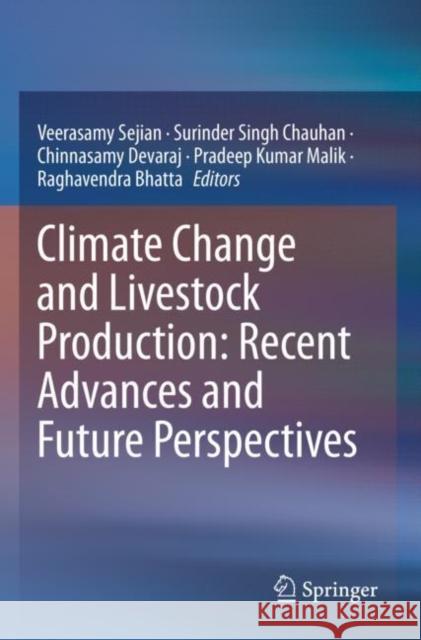Climate Change and Livestock Production: Recent Advances and Future Perspectives » książka
Climate Change and Livestock Production: Recent Advances and Future Perspectives
ISBN-13: 9789811698385 / Angielski / Miękka / 2023 / 321 str.
Climate Change and Livestock Production: Recent Advances and Future Perspectives
ISBN-13: 9789811698385 / Angielski / Miękka / 2023 / 321 str.
(netto: 650,21 VAT: 5%)
Najniższa cena z 30 dni: 655,41
ok. 22 dni roboczych
Dostawa w 2026 r.
Darmowa dostawa!
This book describes the importance of sustainable livestock production from a food security perspective in the changing climate scenario. It covers the amelioration of climate change impacts and describes the various mitigation strategies to reduce enteric methane emissions. The book targets sustainable livestock production by covering diverse concepts of amelioration, mitigation, and policy up-gradation. Further, it examines various adverse impacts of climate change on growth, meat, milk, and reproduction in livestock. Most importantly, the book covers novel aspects of quantifying heat stress response of livestock based on non-invasive methodologies, including infrared thermal imaging, sensor-based applications, hair, urine, and fecal cortisol estimation. Particular emphasis was given to describing the skin-based novel approaches to establish climate resilience in indigenous breeds. The book provides detailed descriptions of alleviating climate change impacts on shelter management, nutritional interventions, and genetics-based strategies involving advanced genomic tools. Lastly, it highlights the livestock species which could be considered ideal climate-resilient animal models to withstand the adversities associated with climate change.
This book describes the importance of sustainable livestock production from a food security perspective in the changing climate scenario. It covers the amelioration of climate change impacts and describes the various mitigation strategies to reduce enteric methane emissions. The book targets sustainable livestock production by covering diverse concepts of amelioration, mitigation, and policy up-gradation. Further, it examines various adverse impacts of climate change on growth, meat, milk, and reproduction in livestock. Most importantly, the book covers novel aspects of quantifying heat stress response of livestock based on non-invasive methodologies, including infrared thermal imaging, sensor-based applications, hair, urine, and fecal cortisol estimation. Particular emphasis was given to describing the skin-based novel approaches to establish climate resilience in indigenous breeds. The book provides detailed descriptions of alleviating climate change impacts on shelter management, nutritional interventions, and genetics-based strategies involving advanced genomic tools. Lastly, it highlights the livestock species which could be considered ideal climate-resilient animal models to withstand the adversities associated with climate change.











